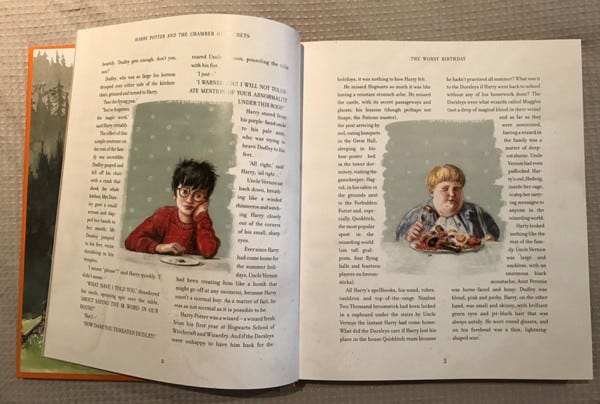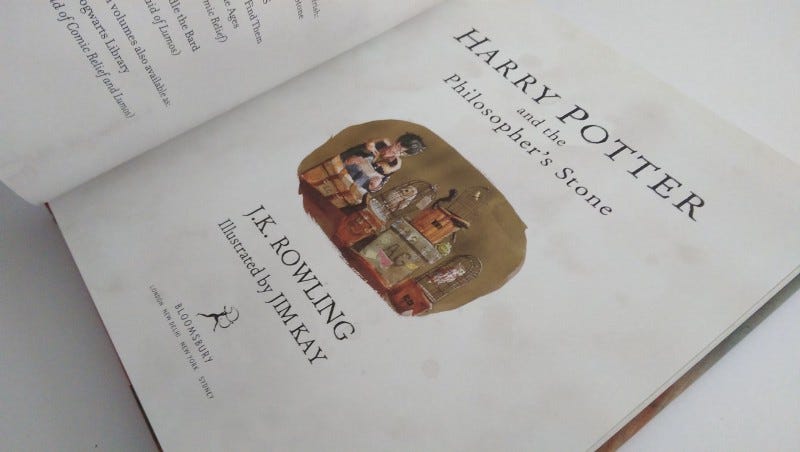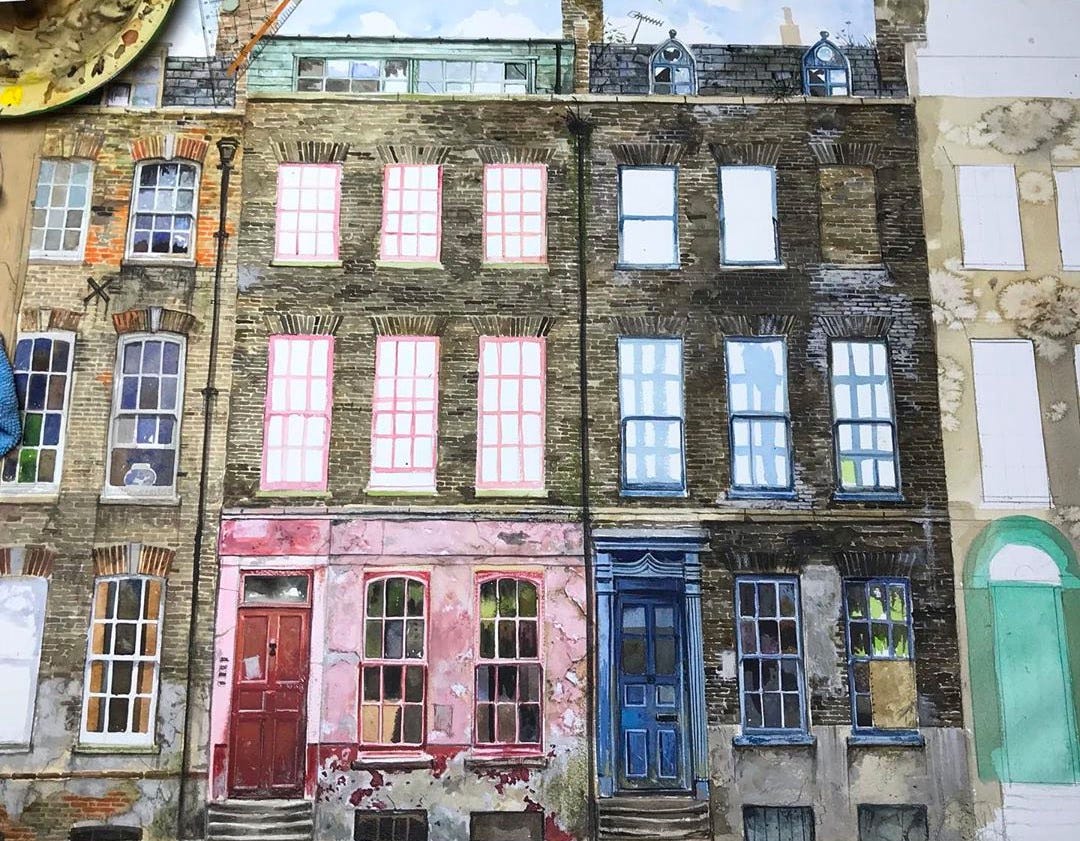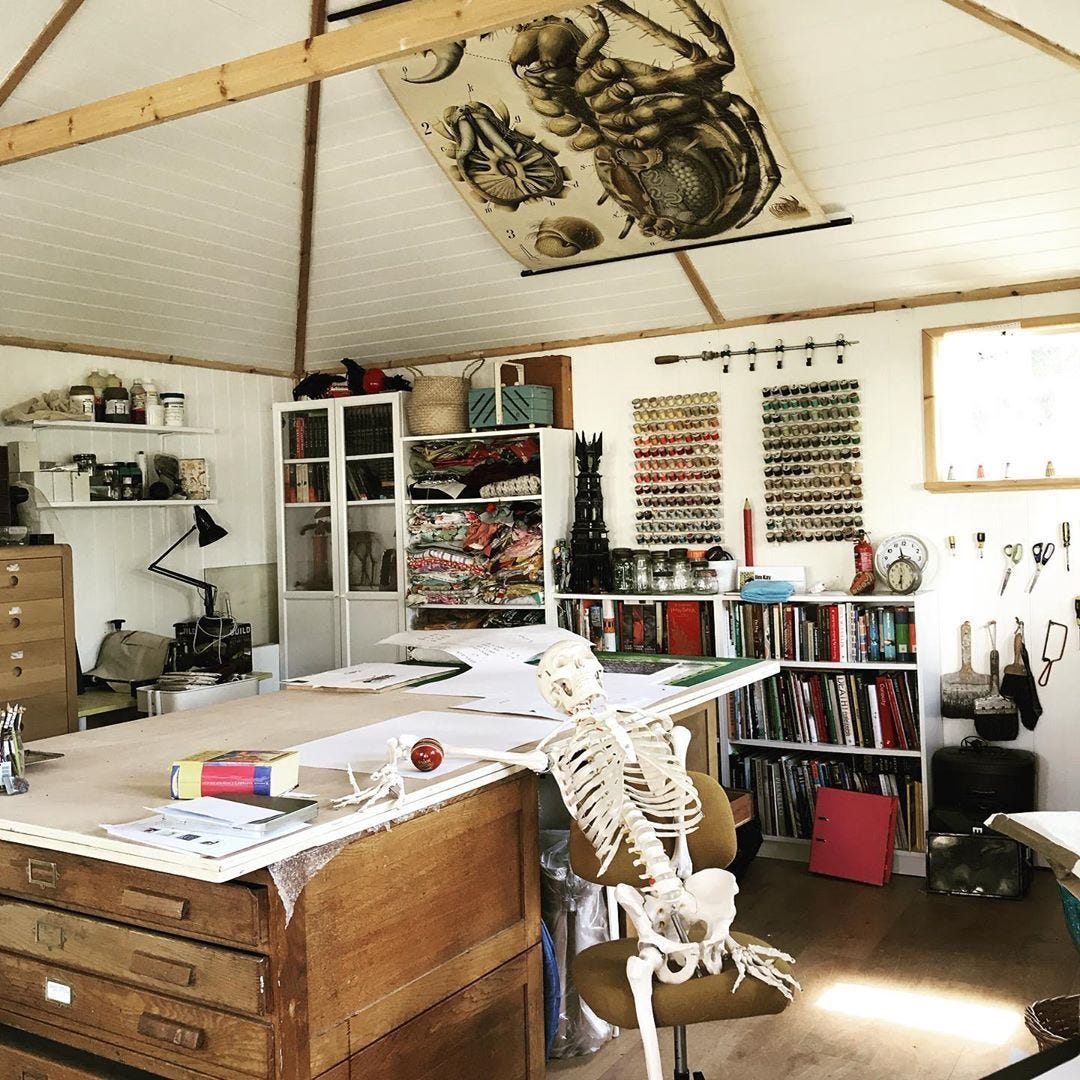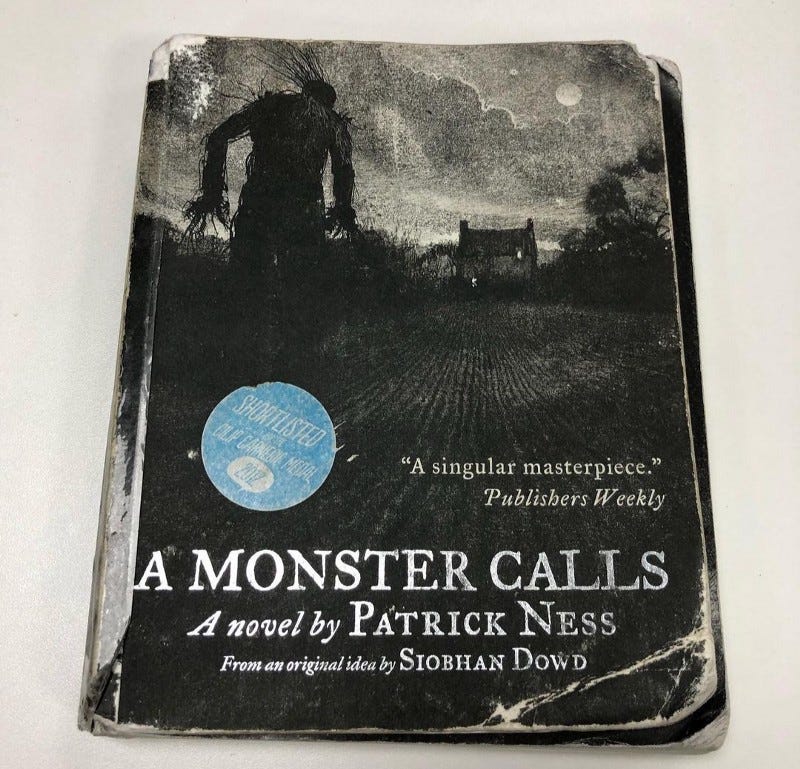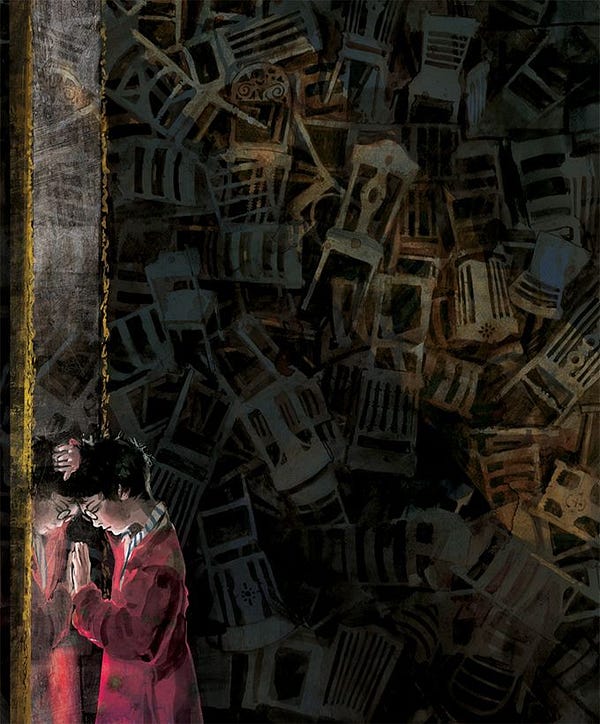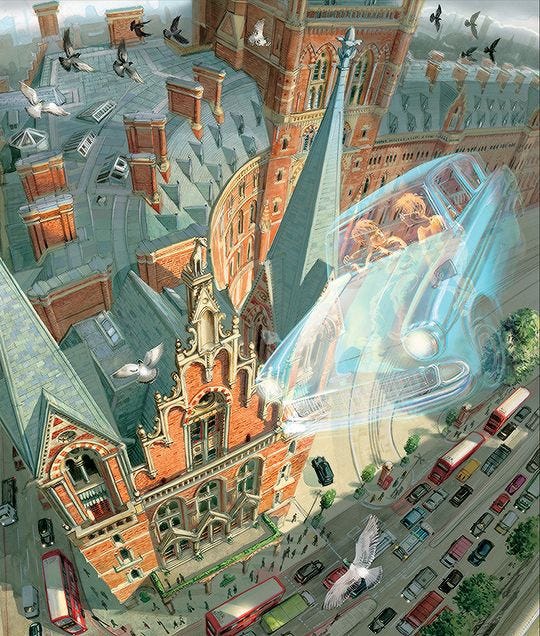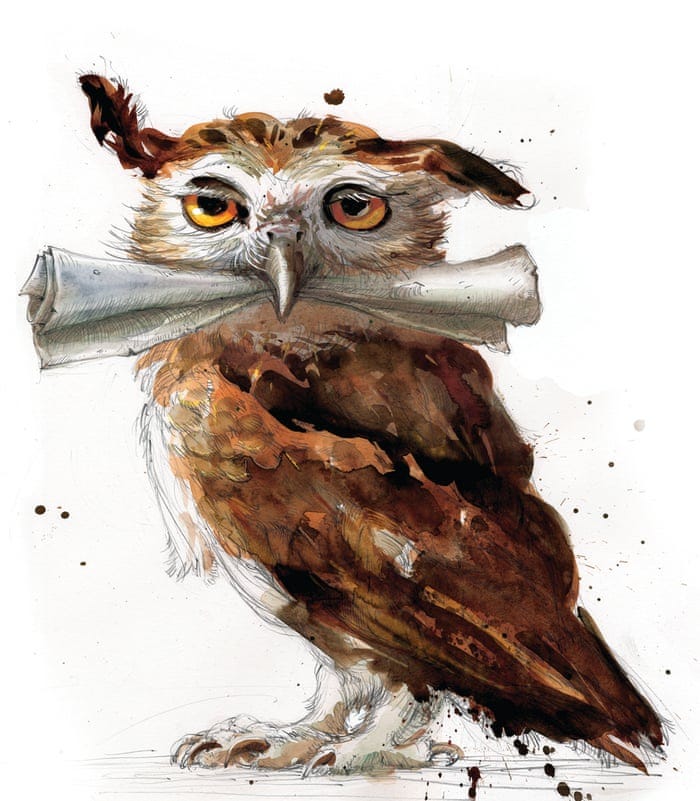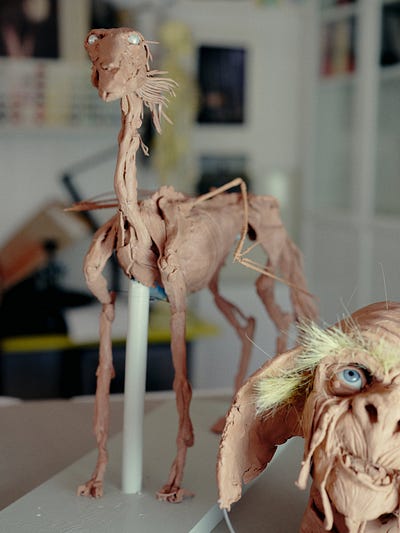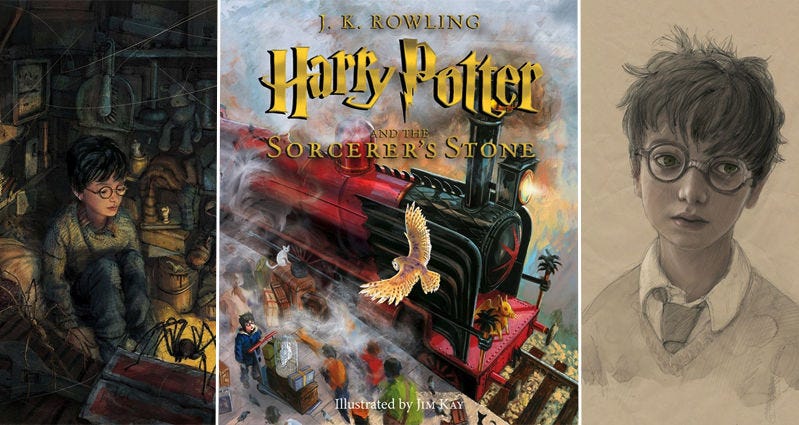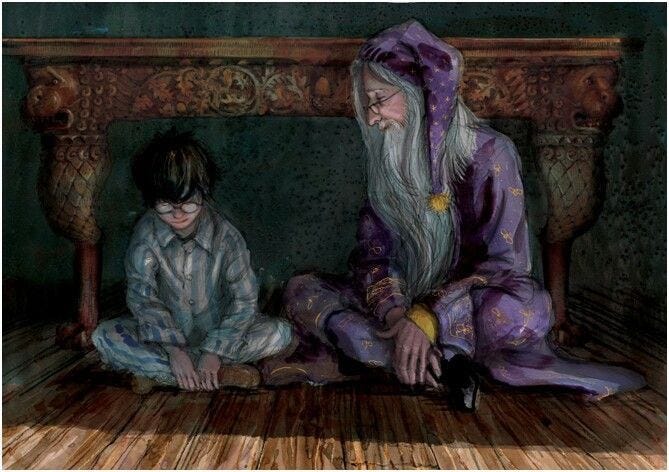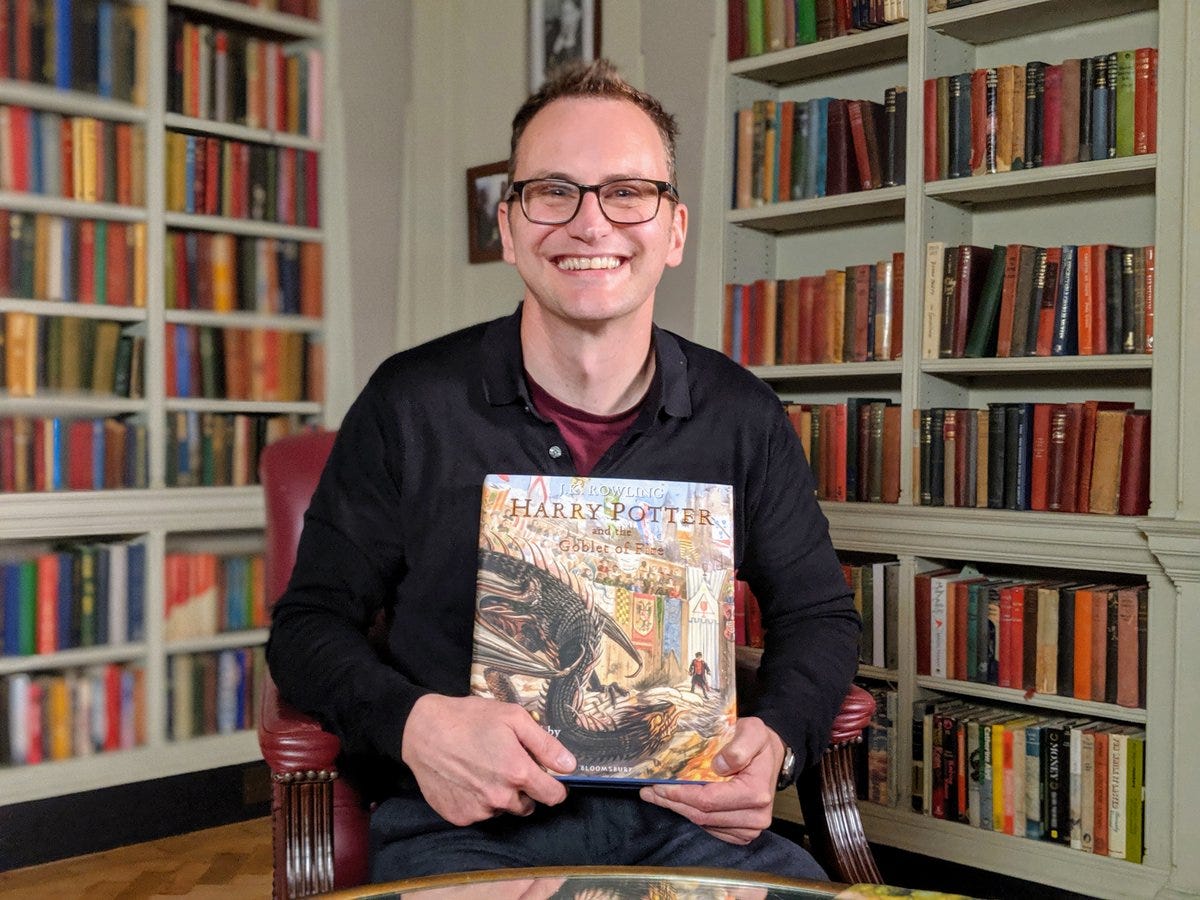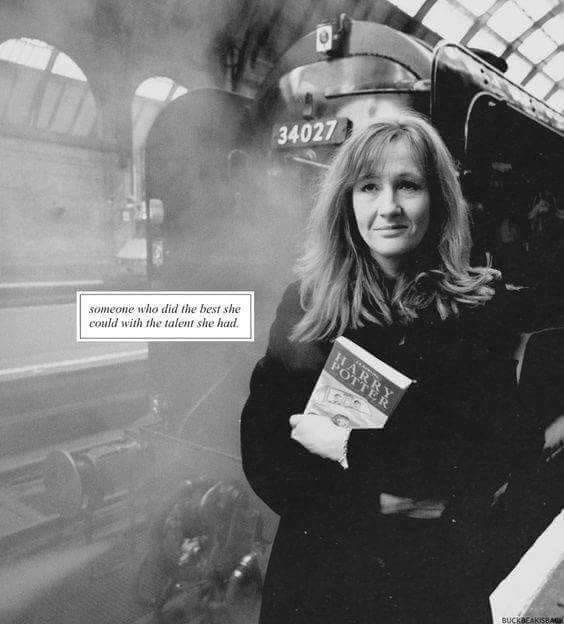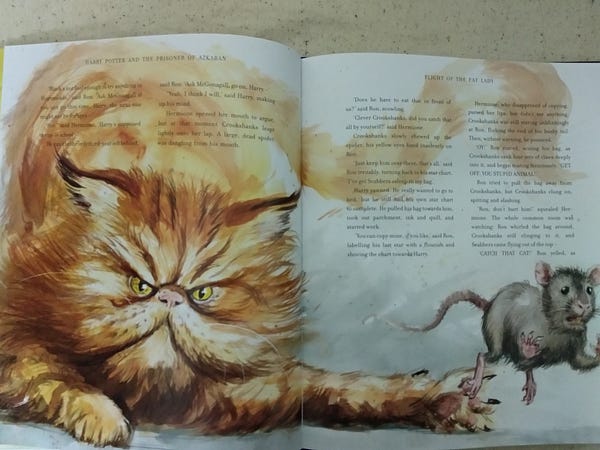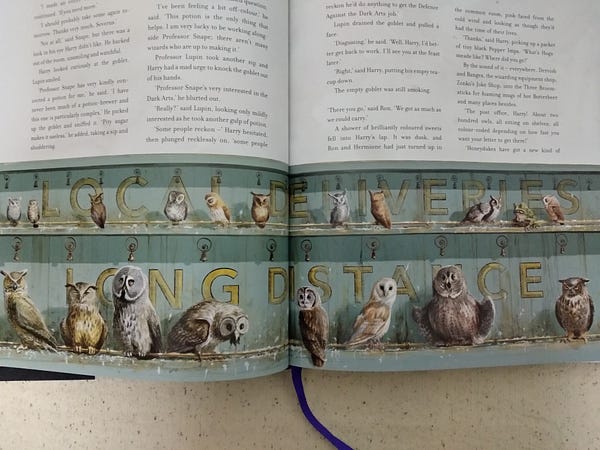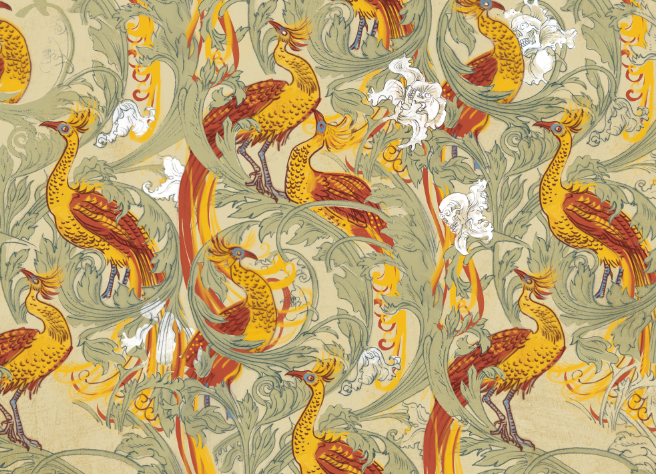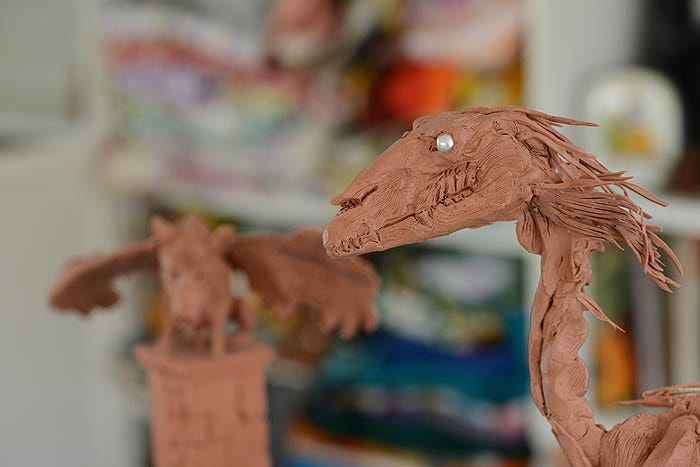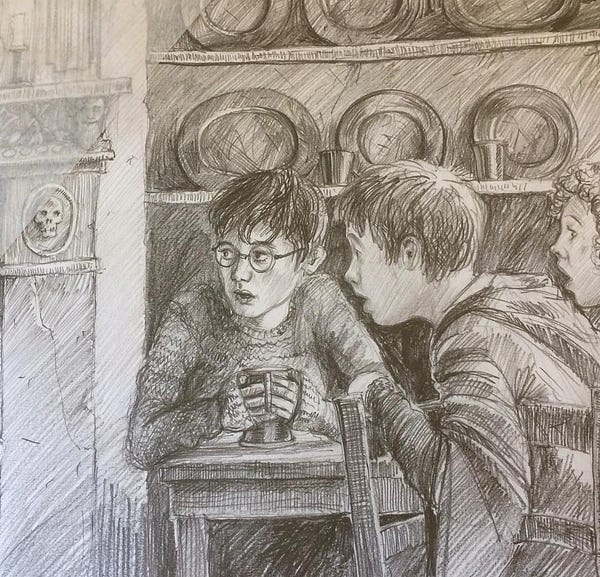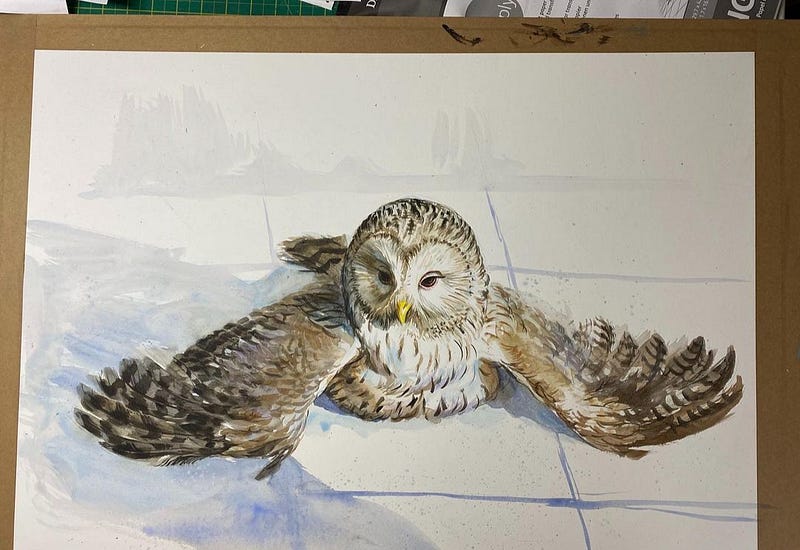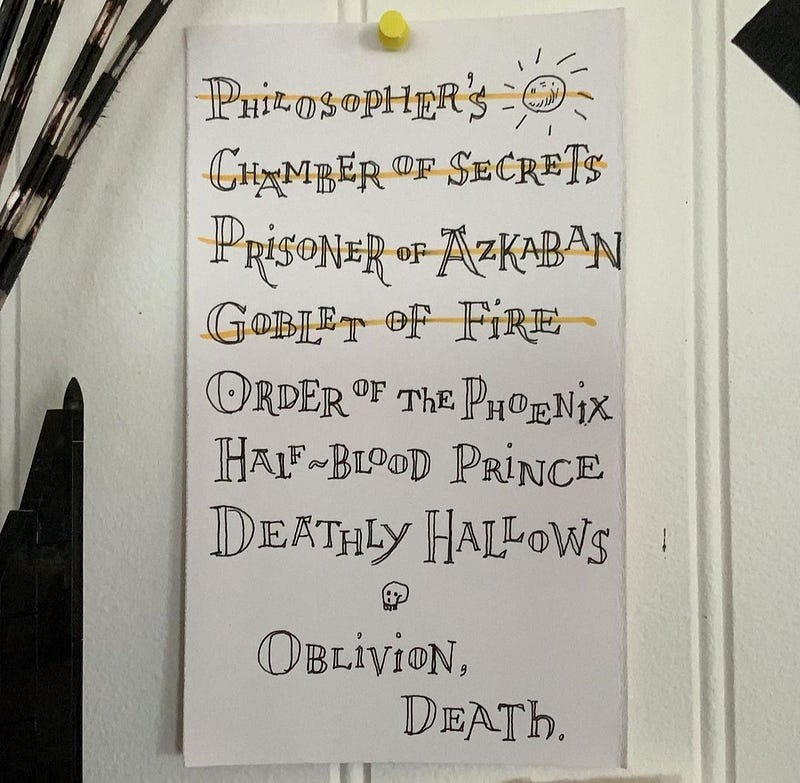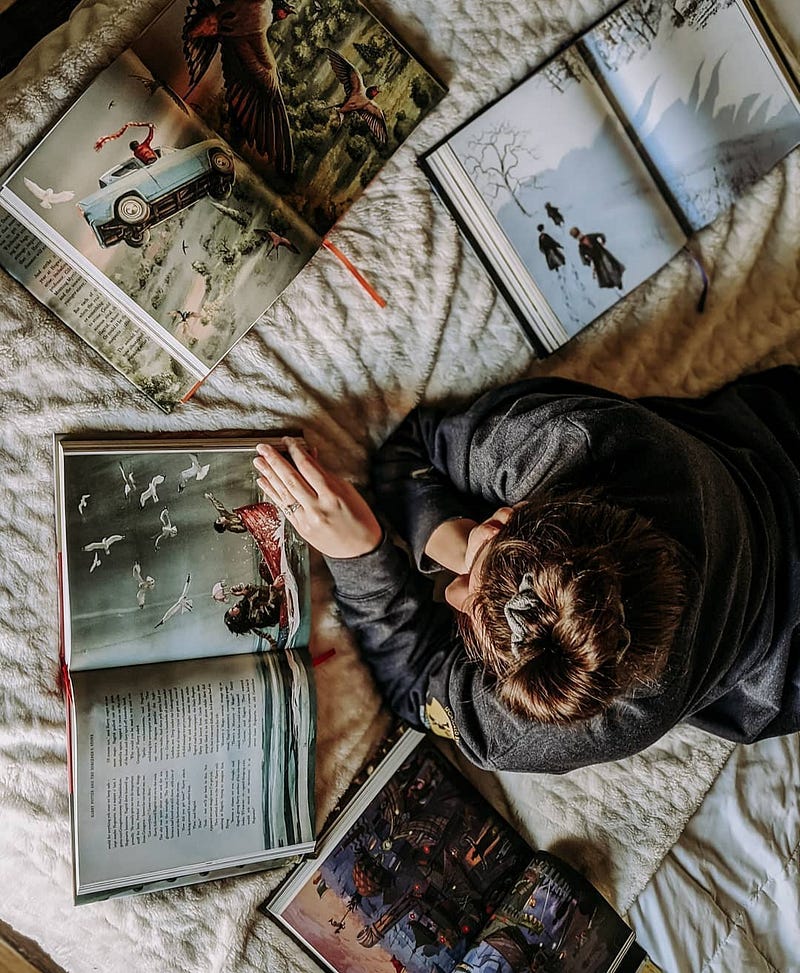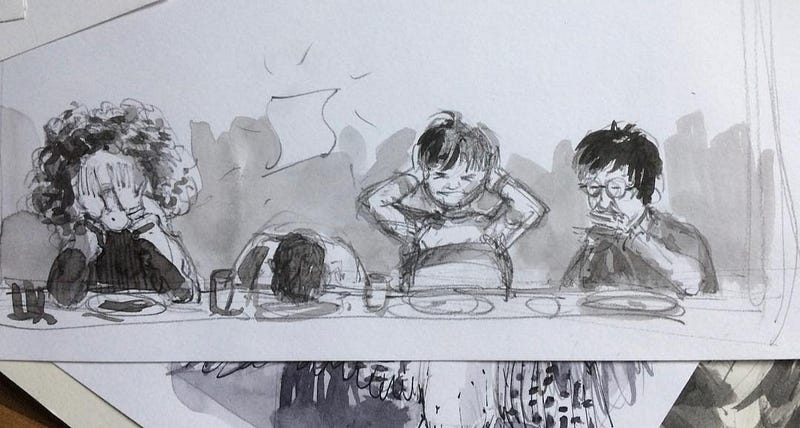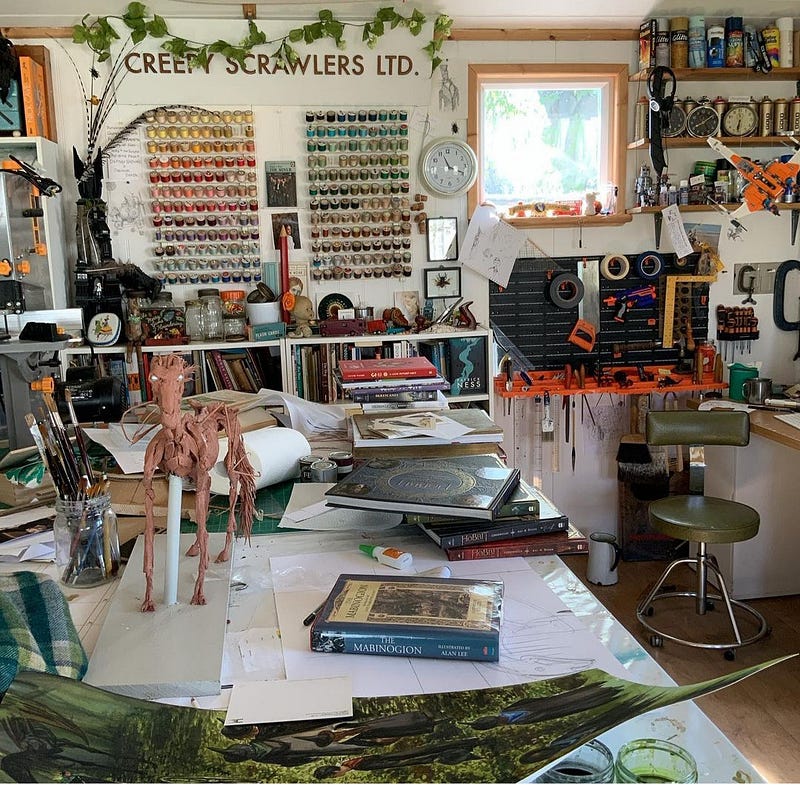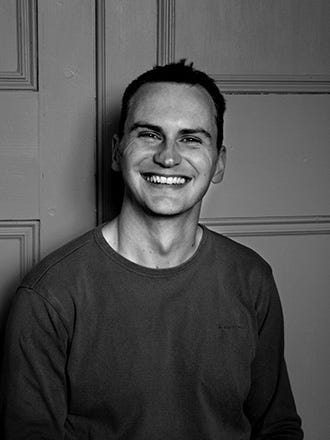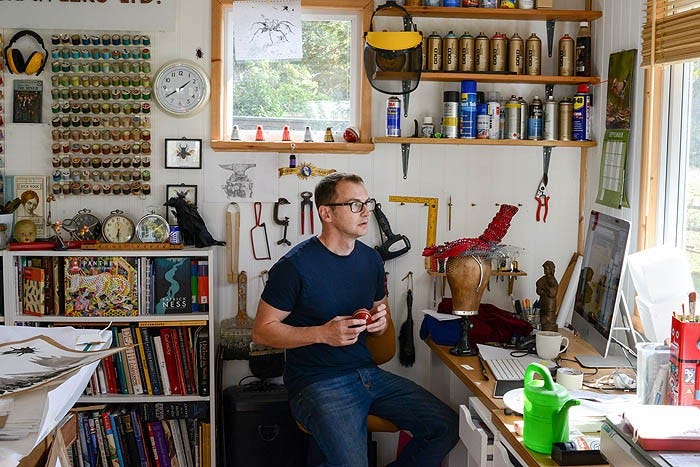Harry Potter Illustrator “Jim Kay” talks about The Connection Between Creativity & Mental Health
About the Artist
Jim Kay is an illustrator and printmaker working in East Sussex, he predominantly provides illustrations for children’s books, but has also worked in film and television as a concept artist.
Jim Kay
Edit descriptionwww.jimkay.co.uk
He also manages his Company , Creepy Scrawlers Ltd. with his wife Louise Clark. It is a creative venture which encompasses all of their creative endeavors, from illustration to embroidery, and millinery to fabric design.
For the last few years Jim has spent his time in re-creating the wizarding world in illustrated form. His work is the star of Bloomsbury’s new illustrated editions of the Harry Potter books (written by J.K. Rowling), which have earned him quite a name on an international level.
Jim Kay
Harry Potter and the Prisoner of Azkaban is now in the shops! Below is an image from the new book - Buckbeak on…www.jimkay.co.uk
With books 1 to 4 published, Jim is currently working on the 5th, The Order of the Phoenix. The detail and passion that sits within the pages becomes fully realized when talking to Jim, who is dedicated to finishing all 7 books.
As part of my ongoing quest to explore what it means to live a creative life, I periodically interview creative artist or illustrators to come and talk how they balance life , art and creativity.
Excerpts from the Interview :-
Q1) I was wondering what your introduction to illustration initially was? Was it something in particular that made you and Louise start Creepy Scrawlers Ltd.? What was the mission and vision you guys had projected when you were starting this beautiful creative house?
Jim : I was a freelance illustrator initially straight after leaving the University of Westminster way back in 1997, blimey that’s 24 years ago. I worked in magazines mostly, very quick turnaround. Usually I got the call late afternoon and the work had to be done by the next day. Back then you had to shoot your work onto color slide; so I would create the illustration in a few hours, get the last tube into London and drop my work off at a place called ‘Joe’s Basement’ where they would photograph it for me. I’d take the color 35mm slide over to the publishers, drop it off, and get the night bus home. Days before digital folks! I simply couldn’t make a living just off illustration though, so I worked in a hospital for a few years, did all sorts of jobs actually to make ends meet. Pretty much gave up on illustration for over a decade, moving from job to job. I worked for a few years at the Tate Gallery in London, then a few more at the Royal Botanic Gardens, Kew. I eventually did a solo exhibition in a London gallery thanks to encouragement from a very kind curator, and started to get dribs and drabs of work from there. It still took many years of scratching a living in different jobs and support from my partner until A Monster Calls came along and I was able to work on illustration full time.
Jim Kay
The final illustrations for A Monster Calls were produced digitally but in order to produce the work Jim made many…www.jimkayillustrator.com
When Harry Potter was offered Louise started to help me full time, and not long after that we formed the Limited Company as it made life much easier in terms of accounting and organisation. We were both working on Potter, and Louise has largely been helping me out ever since, which has sadly meant that she hasn’t had a chance to do much of her own work for a long time. I haven’t drawn anything for myself in over 10 years now.
Harry Potter | Harry Potter illustrated books - J.K. Rowling and Jim Kay
Browse and buy Harry Potter Illustrated Editions and see beautiful Harry Potter illustrations from the hand of…harrypotter.bloomsbury.com
Q2) Where did you go to college? What habits or hobbies did you develop during those years that contribute to working as a professional illustrator?
Jim : There was a fantastic General Art and Design course (and still is) in Mansfield where I grew up. This was the first time I had a go at printing, fabric design, sculpture, ceramics. It was all really new and exciting to me. The lecturers made all the difference too, they were passionate, enthusiastic; and many were active practitioners of the arts too, working on their own little exhibitions and projects. After that it was an Illustration degree at the University of Westminster in north-west London. Made some wonderful friends there, still chat every day.
Q3) How has being in Northamptonshire, England enriched your creative process? What have you learnt from the city?
Jim : Well I’m no longer in Northamptonshire, I’m now in Winchelsea, right on the south coast of England, facing France. Although technically a town, Winchelsea is now just a few streets on the former site of an important medieval centre of commerce, founded in 1281. It’s an extremely beautiful place, and still has its medieval wine cellars, ancient buildings and stone fortified gates. There’s a lot of history here; Hastings is just down the road, and the French and Spanish frequently raided this town in the 14th and 15th centuries. I find it very inspiring, but for myself the real attraction is the wildlife, some very unusual and rare species to be found here. I’d say my first love is Natural History, and all birds, trees, reptiles and creepy crawlies feed into my illustration work.
Getting to know the area....
We have been in East Sussex for a little while now, and I'm in love with the place. We are trying to make the garden…creepyscrawlers.com
Q4) What is your daily ritual? How do you approach your work?
Jim : Well, I did used to have some sort of structure, but the last few years I’ve been battling mental illness, so that’s all been shot to bits. I have to try and work when I’m able to. I’ll be honest it has completely upturned my life. I used to work insane hours, and a word of warning — this catches up with you! You simply can’t sustain it. It took a toll on my eyesight and my shoulder too. Now I’m lucky if I manage 3–4 hours of decent concentration a day — so I might sit in my studio for a lot longer than that, but it’s very hard to focus. I’m working with some people with the aim of getting better, but there are good days and bad days. Added to that most of the work I create is pretty unusable, so I have to just keep trying again and again until something pops out. I think this is the aspect that can be pretty soul destroying, I worked for three weeks recently on a piece which just ended up in the bin. That’s hard to swallow, even on a good day :). I’m not one of these illustrators that can sit down and say ‘I’m going to create this image now, and it will take this amount of time’ — I’m just not good enough. I’d really REALLY love to have some sort of structure or routine again — that’s the dream! I tend to just pick away at bits of an illustration, maybe work up one tiny little bit, and see if I can carry that over the rest of the image. Not at all how you are supposed to go about it, but I’ll take anything right now. That’ usually when I know something might work though, I’ll work up maybe just two square inches and I can suddenly see in that a snapshot of the finished piece.
Q5) Which artists were you looking up-to when developing your drawing style early on? Was there something unique about your environment, geography, or regional culture that impacted the development of your skills?
Jim : At art college we were all in awe of Lucian Freud, and I still find his work arresting.
The Genius of Lucian Freud - artnet News
Lucian Freud is one of the most well-known and influential painters of the 20thcentury. His expressionist style of…news.artnet.com
I’ve said this many times before but I haven’t found my ‘style’ yet, and so I’ve spent years fiddling around with different techniques and materials, looking at this artist or that designer, in the hope that something will stick. The first Harry Potter book kind of reflects that approach, different styles, trying new things.
Harry Potter and the Philosopher's Stone
Visit the post for more.creepyscrawlers.com
It was great that Bloomsbury put those experiments together in one book. I suppose if you were to look at a book that’s more close to the way I think then I guess A Monster Calls would be it. Potter was a challenge because I’d not really done colourful work before, or drawn children! I think in terms of a black and white film, that’s how I compose images in my head. Louise has been really helpful as she understands colour far better than me.
So in terms of inspiration it’s a strange mixture of objects I see in museums (I’ve spent a lot of time in libraries and museums), old black and white movies, and most importantly, my garden. I get most of my ideas in the garden. I’ll go through periods where I’ll obsess over one artist in particular, or maybe one film-maker, and I’ll think ‘I should be more like this!’ This almost always ends in a disaster, and I sheepishly return to my own slow process of scribbling little notes in pencil and trying to piece bits together in all manner of different ways. I should also add that a big factor is what I’m listening to while I’m working (I can’t work in silence), so the I see an illustration from years back I know exactly what I was listening to at the time. It might be a tv series, a band, a documentary, a radio station. Diagon Alley is basically a diary of lots of different things I was listening to at the time (it took about 3 months to do each one of those street scenes).
Q6) Do you have an essential philosophy that guides you in your creative expression?
Jim : Well, you are asking someone that’s doing everything wrong at the moment! I suppose don’t fear having a go. I worked briefly on a palliative care ward of a hospital, and you learn from people at the end of their journey that you have to try things, even if it means you might fail, fall flat on your face, and allow people to say ‘I told you so’. There’s never a shortage of dreary people available to say what you should have done. However, it’s better to say ‘well at least I tried’, than ‘what if’. You never know, sometimes it pays off, and if it doesn’t chalk it up to experience. I was terrified of doing Potter which is partly why I took it on. It was completely out of my comfort zone. I really struggle with drawing children, and working with colour — so I thought ‘maybe I should take on this colourful story about children in a school for wizards!’. The idea was I’d somehow miraculously overcome all my weaknesses. It’s been really hard, almost broke me a few times, but I’m so glad and grateful to be involved with this. I still struggle with drawing young people and painting in colour, but I’ve met some amazing people through this commission. Also, any illustration job after this would seem pretty straightforward I hope! :)
“Seeing Jim Kay’s illustration moved me profoundly. I love his interpretation of Harry Potter’s world , and I feel honoured and grateful that he continues to lend his talent to it” — J.K.ROWLING
Q7) Do creative professionals have pet peeves? What is yours?
Jim : Only one, and for me it’s a big one. When people hear that you struggle with your mental health they often remark that the illness somehow benefits your creative process, or that the two are beneficially or necessarily symbiotic. Trust me, it doesn’t and they are not. I don’t want to dwell on how much of my life I’ve lost to this, but let’s just say I would have been a far more productive illustrator without it. I think if mental illness manifested itself as some massive distended bubble-head growth on your face, people wouldn’t say ‘yeh but it’s probably what makes your work interesting’….or maybe they would! I don’t know, I haven’t been around many people lately :)
Q8) Do illustrators also have a block (like the writer’s block)? (If so) How does an illustrator get over it?
Jim : They do, and I used to just grind away and try and work through it. In the past if I was struggling with work I’d think ‘Work Harder!’, and I would spiral into a negative feedback loop of ‘I’m too tired to be creative, but now I’m really behind so I must work harder and longer hours — but I’m too tired to be creative….’ etc.
Sleep is everything. Without sleep I’m a monster, and yes, when I was young I was constantly pulling all-nighters to hit deadlines, but as your hair falls out and your prostate grows I think the reality is you need to just stop now and again to recharge. Your best ideas often come when you finally cease trying to squeeze ideas out onto a blank piece of paper. For me it’s that precise point when I’ve given up and I am just about to go to sleep — good to keep a pencil and paper by the bed.
Q9) What personality characteristics do you have that has been most helpful in your career?
Jim : I’m motivated by jealousy, self loathing and a morbid obsession that if I am squashed by a bus tomorrow I dread to think what illustration somebody might wheel out to accompany my obituary/press release. I’m always hoping the next illustration I do I’ll look at and go ‘I wouldn’t mind if somebody saw that’. Not happened yet.
Q10) You think it’s important to have people in the same field to bounce things off and improve overall as an artist?
Jim : God yes! This is the main problem for young illustrators; you learn your craft on a course full of like-minded people all jazzed up about making books, squirting ideas at each other, inspiring you all — then you leave your course and end up sat in a small bedsit somewhere living off mashed potato, and trying to explain to the local employment office that the position they want you to fill shrink-wrapping raw chicken for some supermarket is not going to help you getting into publishing. I did it anyway….I needed the money.
Q11) As an illustrator of the Harry Potter novels, you have a unique challenge, you’re drawing imaginary creatures that doesn’t exist. How do you make them look real?
Jim : Well, I tend to make them out of plasticine or clay, just so I can light them and study them from every angle. Much easier!

The Order of the Phoenix
I know - it's super late coming out. It looks like it might emerge in 2022 now. As I'm writing this the owl is hooting…creepyscrawlers.com
Q12) How do you engage with your online audience? What have been some of the challenges of promoting yourself on social media and making a living off of cartooning and illustration?
Jim : I’ll be honest, I don’t. It sucks up masses of time. I am on Instagram under Creepy Scrawlers Ltd., but even then I get messages from people checking to see if I’ve died or fallen down a mine. Louise and I also created a website (www.creepyscrawlers.com) but as all Potter work is kept safely under wraps until publication there’s a limit on what I can put up there. I’m sorry to say I’ve never cartooned :)
Q13) What kinds of different hats have you had to put on while running your creative house? Which such project was most challenging?
Jim : Again, practically none, Louise has been helping me through Potter, and I’ve designed a few on paper but never had the chance to execute them. I literally only work on the boy-wizard stuff, no time for anything else until it’s over.
Q14) Any future projects you’re working on right now.
Jim : I’d love to work on my own book/hats/landscapes/portraits. That’s years away, post Potter!
Q15) Is being an artist a very satisfying job? It seems you job adapts itself to your life rather than you adapting to the job which would be the case with many other forms of work.
Jim : Most artists I meet seem to be grateful that they are able to do it, (I know I am,) but mostly agree that it’s hard work. The creative side of it is about 60 percent of the job, the rest is all the paraphernalia that surrounds being self-employed. I’ve met illustrators with way more talent than I possess, but they don’t always manage to adjust to the solitary existence, or the difficult aspect of dealing with the business side of it. I like the act of illustrating, the process, but I don’t really look at the books once they are done. You tend to just focus on what you didn’t manage to get in, or what mistakes you made. Satisfaction and happiness lies in the problem solving side of it for me. In an ideal world I’d like to design the illustrations and let someone else execute them!
Q16) Being creative is largely about having the courage to fail repeatedly. Could you give an example from your own experiences of a project that failed? What went wrong, and what did you learn/take away from that experience?
Jim : I’ve been kicked off a couple of books, quite rightly too. Sometimes you just don’t fit the brief in the way you expected, and it’s a struggle. This is not necessarily a disaster, for you or for the publisher. Not only does it reveal to you what your limits, strengths and weaknesses are, but it can also help the gestation process of the book — getting it ultimately into the place the publishers want it to be. The downside is that sometimes when a project fails it haunts you for a while, and that doubt can hold you back a little or erode your confidence. You need to move past it. You can’t change the past, just try and kick on and prove to yourself and others that when you do click with a book, you are able to bring something new and distinctly ‘you’ to the table. Sounds cheesy but that’s what you are selling — your individual take on a book. Lots of people out there who can draw really well, but can they get inside a book and make it theirs?
Q17) One last question! What’s one piece of advice you would give to an aspiring illustrator, writer or artist? On a personal level, I was wondering when you reflect on your life as an illustrator have you learned any lessons about life, or obtained any particular perspective?
Jim : Well, I kind of did it all wrong! I’d say ‘don’t do what I did’, staying in one job while ignoring a little voice saying ‘you should try this instead’. It took me years to gain the confidence to try freelance illustration again after my first failed attempts. I still don’t see myself as an illustrator. It sounds silly but I’ve had a lot of jobs and this is just something I’m doing at the moment. I still haven’t found what’s really ‘me’ in terms of a job.
People from my illustration degree course have gone on to all sorts of different career paths; animation, teaching, games design, publishing etc. They’ve had a great time doing it, discovering new things. By all means have a crack at illustrating books, if that’s what you want, but if it doesn’t work, or there’s a little voice saying ‘this isn’t right for me, I want to do this instead’, go ahead and try, have no regrets. There will always be stacks of people telling you what they think you should do. Not wanting to sound cheesy again but, it’s about the journey. Nothing wrong with changing direction a few times, makes life interesting. If you are creative, you will find the outlet somewhere, and sometimes in surprising places.
Thank you all for reading and a big thanks to Jim Kay for collaborating in today’s post!
It’s a pleasure!
If any of my readers here , wish to know more about Jim and his work. They can subscribe to his newsletters. Also , do open the links mentioned below. It has all the essential details.
Website : https://creepyscrawlers.com/
Instagram : https://www.instagram.com/creepy_scrawlers/
Bloomsbury : https://harrypotter.bloomsbury.com/uk/bookshop/illustrated-editions/harry-potter-illustrated-editions/





